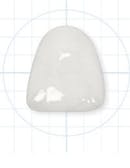The advantages of CBCT
An interview with Drs. Alan Rosenfeld and George Mandelaris
By Dr. David Gane
In periodontics, cone beam computed tomography (CBCT) is a superior radiographic modality for the visualization of bony topography and lesion architecture and the planning of dental implants. It is proving to be a reliable aid in diagnosis, treatment planning, execution of therapy, as well as in the outcome assessment process. I recently had the pleasure of discussing how this exciting technology is impacting periodontal practice with Drs. Alan Rosenfeld and George Mandelaris of Chicago.Gane: How long have you been using 3-D imaging in your practice, and what are your selection criteria for its use?
Mandelaris and Rosenfeld: Our practice began using computed tomography (CT) for implant diagnostics in 1987. We recently incorporated CBCT imaging into our practice with an in-office Carestream Dental 9300 CBCT machine. Significantly reduced radiation exposure and in-office accessibility of 3-D volumes has had a major impact on the expansion of the application beyond implant diagnostics alone. We select patients for CBCT use based on the central theme of information management. When clinical examination and conventional radiography are not sufficient for treatment decision making, patient-specific 3-D imaging is ordered.
Gane: Alan, I enjoyed reading your book “The Art of Computer Guided Implantology.” Are guided implant surgeries on the rise in your practice? Do you see an increased number of guided implant placements as a trend for the future?
Mandelaris and Rosenfeld: Guided implant planning and surgery has been a part of our practice for a long time. There is no doubt that it is here to stay. Using this approach, implant placements can be performed in a more controlled and safe environment, which leads to more predictable prosthetic outcomes. As implant dentistry grows and CBCT imaging becomes widespread, guided implant surgeries will also increase. The most important concept of successful guided implantology lies within the accuracy of the scanning appliance. While technology has enhanced our ability to execute treatment, it does not trump a thorough workup, correct diagnosis, or team-oriented treatment plan.
Gane: If we take implant planning out of the equation, what do you see as the most valuable contribution that CBCT can make to the specialty of periodontics?
Mandelaris and Rosenfeld: We see CBCT imaging as a game changer in periodontics. While implants have been incredibly successful, we feel as though the pendulum has swung too far to one side and is poised to return to the center. More patients and restorative doctors are demanding that fair and objective efforts be made on the part of saving the natural dentition. The 3-D analysis that CBCT affords will enhance our ability to establish treatment plan recommendations based on more detailed anatomic analysis. Combined with evidence-based knowledge, this will position our specialty in a unique environment to achieve outcomes for restorative doctors like never before. The ability to understand bone positions/furcation involvement, the extent and location of remaining bone, and other regional anatomy issues will surely enhance our ability to assign more accurate prognoses, deliver resective or regenerative surgical therapy more predictably, and hopefully keep more teeth! However, because implant therapy is a large part of what we do and the partially edentulous patient will be the main patient type we see in the future, 3-D imaging allows accurate presurgical assessment for combined implant-periodontal-prosthetic planning.
Gane: What are the attitudes of your patients and referring doctors toward CBCT imaging?
Mandelaris and Rosenfeld: Our referring doctors have been exposed to our 25-year involvement with 3-D imaging. In fact, the concept of “restorative leadership” in the diagnostics is absolutely critical to achieve truly prosthetically-directed treatment outcomes. This means that anatomically correct wax-ups are performed that reflect the implant prosthetic outcomes, not those traditionally done for crown and bridge dentistry. Space appropriation is key, and proper diagnostics must be assumed by the restorative partner to deliver accurate surgical outcomes.
Gane: Do you charge an additional fee for CBCT imaging or is it included in your treatment fee?
Mandelaris and Rosenfeld: There is an additional fee for CBCT imaging. However, the value of more information to enable proper surgical and prosthetic decision making cannot be measured.
Gane: There has been much discussion about the potential risks of ionizing radiation, both in the profession and the media. Can you explain how dose differs between CBCT and the more traditional 2-D periodontal radiographic assessment?
Mandelaris and Rosenfeld: We generally consider this a nonissue. No one would argue that imaging patients with full mouth radiographs using D speed film is excessive with respect to dose. A CBCT volume of the maxillary and mandibular complexes with four vertical bitewings to check for caries is in fact in the same dose range as a full mouth series using D speed film. If you are using less radiation to get more information to better enable diagnosis, assign prognosis, and recommend treatment, how can an intelligent argument be had against CBCT use based on dose? In our opinion, CBCT is the future of imaging diagnostics.
Gane: Describe the process you use for reviewing the 3-D data. What are your professional responsibilities once you have obtained a CBCT data set?
Mandelaris and Rosenfeld: A board certified oral and maxillofacial radiologist reports on every volume imaged in our practice. This report is explained to the patient, and the outcome is always greater value for what we do. This minimizes the risk of missing an incidental finding that could change the treatment plan or affect the patient’s well-being. We believe that volume analysis in a partnership relationship with radiologists is important for proper information management.
Gane: There are currently a large variety of CBCT systems to choose from. Do you see any trends emerging with respect to which types will best serve the needs of the periodontist? Is there a “best size” CBCT field of view for the periodontist?
Mandelaris and Rosenfeld: There are many excellent CBCT machines on the market today. We chose the Carestream Dental 9300 CBCT because of its outstanding fields of view opportunities. A “best size” really depends on the needs of the patient and clinician. Since periodontics is the most interdisciplinary of the specialties, the opportunity to have varying fields of view with exceptional image quality is what we were waiting for. The ability to evaluate the entire maxillofacial complex, including the osteomeatal complex, or a more limited field of view on the same system was important for us. We were on the sidelines for quite some time. We waited until we felt sufficient progress had been made before jumping in. Partnering with a company that has a long history of commitment to dentistry was also important for us.
Gane: How does a periodontist best return his/her investment after purchasing a CBCT?
Mandelaris and Rosenfeld: The investment return is in the success of restorative doctors and the treatment of their patients. This will reflect positively on us. As periodontists, we must be committed to this or our relationship-based partnership will not survive. It is a two-way street, and 3-D imaging undeniably allows for better collaboration.
Gane: What about the fourth dimension? When can we expect that to arrive?
Mandelaris and Rosenfeld: In our view, the first dimension is clinical exam, the second is radiographic review, the third is 3-D assessment for more astute treatment planning, and the fourth is the ability to consult with a patient, referring doctor, and laboratory in an atmosphere of more complete disclosure and collaborative accountability. The ability to engage and inform patients with fewer unknowns is the future.
George A. Mandelaris, DDS, MS, is in private practice with Dr. Alan Rosenfeld at Periodontal Medicine & Surgical Specialists, LTD, in Park Ridge and Oakbrook Terrace, Ill., and is a Diplomate of the American Board of Periodontology. He limits his practice to periodontology and dental implant surgery. Reach Dr. Mandelaris at [email protected].
Alan L. Rosenfeld, DDS, FACD, is a professor of clinical periodontics at the University of Illinois College of Dentistry, and an attending in the Deptartment of Surgery at the Lutheran General Hospital, Advocate Medical in Park Ridge. He has published numerous articles about CT scans and guided implant surgery, and a textbook entitled “The Art of Computerized Implantology.” Dr. Rosenfeld maintains a private practice with an emphasis on implant dentistry and periodontal plastic surgery. Reach him at [email protected].
Dr. David Gane has a passion for dental imaging and has published and lectured both nationally and internationally on this topic. Dr. Gane serves as vice president of Dental Imaging for Carestream Dental LLC, the exclusive maker of Kodak Dental Systems. Reach him at [email protected].
For more on this topic, go to www.dentaleconomics.com and search using the following key words: 3-D technology, Dr. David Gane, Dr. Alan Rosenfeld, Dr. George Mandelaris.


